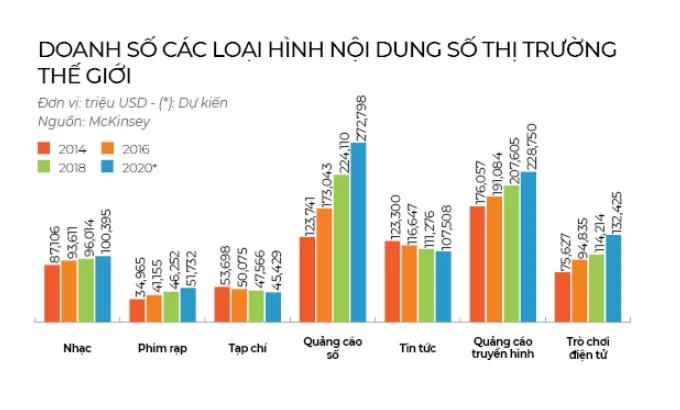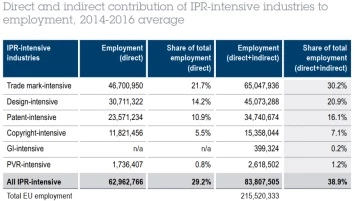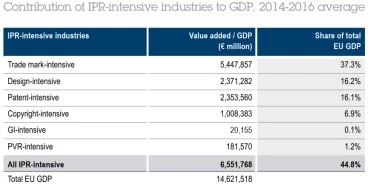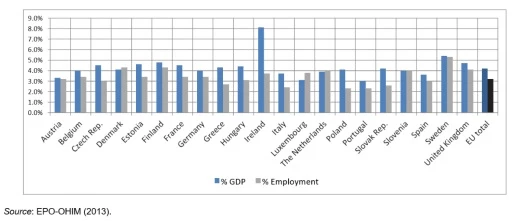Copyrights in the Digital Age
Prime Minister: We must have an effective solution to remove difficulties for businesses / Vietnam’s retail market continues to be an opportunity for US businesses
The Digital Content Industry is being evaluated as a "new gold mine" that is setting up a new multi-billion-dollar industry in Vietnam. The Internet has become the dominant platform for providing digital content such as movies, music, books, news, and software. Vietnam Enterprise Magazine is now publishing a series of articles written by Nguyen Ngoc Han (CEO Thudo Multimedia) from the perspective of "copyright management and protection on the Internet". Throughout the articles, it will manifest the importance of copyright as an incentive mechanism for the establishment and dissemination of digital content.

Mr. Nguyen Ngoc Han - CEO Thudo Multimedia.
Digital content is a “New gold mine”
In 2015, the Vietnamese government announced the 10-year plan of action for the country's wide-ranging digital transformation, its ambition is to have 10 unicorn startup companies valued at over $1 billion each year in 2030.
Intending to integrate at least 10% of Digital adoption across all fields and an Internet adoption rate of 80% for all households, the plan seems to be on the right track.
Estimates by Google, Temasek, and Bain&Co predict that Vietnam could grow to $52 billion by 2025, accounting for about one-sixth of Southeast Asia's $300 billion digital economies. The development of Vietnam's digital economy has put forward many opportunities for investors, startups, and businesses.
These opportunities include e-commerce, digital finance, online gaming, and technology-enabled services to accelerate Industry 4.0 (IR 4.0). Like other ASEAN countries, the majority of Vietnamese citizens still have minor access to banking services so that it makes digital financial services become an appealing option for loans and payments.
In particular, the Digital Content Industry is being evaluated as a "new gold mine" that is setting up a new multi-billion-dollar industry in Vietnam. From only 3,000-4,000 billion VND 10 years ago, up to now, Vietnam's Digital Content Industry has had sales of over 10,000 billion VND. Domestic enterprises are catching up with this wave and reaching for the world.
In ASEAN alone with more than 400 million people, the annual revenue of the Digital Content Industry is estimated at 150 billion USD, of which the revenue from copyright is 5-7 billion USD and up to 55-65 USD billion USD for digital content services.
In Vietnam, in the framework of accelerated growth of network infrastructure, a young population, an increasing number of smartphone users, and increasingly developed Internet infrastructure, although the share of the revenue from the domestic Digital Content Industry has not reached 10% of the entire Information Technology Industry the Institute of Information and Communication Strategy (Ministry of Information and Communications) has determined that digital content is a potential market that will explode soon. In the next 5-10 years and terms of economic value brought to Vietnam, the Digital Content Industry is forecasted to develop after tourism, surpassing textiles and petroleum... and it is estimated to have one million employees.
According to the Institute of Information and Communication Strategy, Vietnam is leading the ASEAN region with 92% of people watching online videos every week, followed by the Philippines with 85%, Indonesia with 81%. Within 4 years, the percentage of online video viewing on smartphones has increased from 10% to 64%. Up to 97% of Vietnamese people interviewed said that they use “video on demand” service to watch movies, 90% watch entertainment programs, 89% read news from local channels, 87% watch music, 84% watch foreign movies.

The value of copyright to boost the Digital Content Industry
The Internet has become an important platform for delivering digital content such as movies, music, books, news, and software. Most importantly, the global reach of the Internet allows content to be sent almost instantly to any part of the world. This means that many restrictive barriers to exchanging physical content products (e.g., costly shipping, import duties) are significantly reduced or eliminated for digital content products. The above statement also helps to emphasize the importance of copyright as an incentive mechanism for the creation and dissemination of digital content.
Digital content is blooming on the Internet according to a range of growth indicators. As of 2016, in Europe, the value of the intellectual property industry accounted for 48% of GDP and 29.2% of the direct employment (of which the employment of European citizens was 12.9%; foreign companies in Europe was 9.8%).


Cisco has estimated that all forms of video (e.g. TV, video-on-demand, Internet, and P2P) will account for approximately 90% of all Internet consumption by 2021 (Cisco, 2018). Another example is the recent rapid growth of websites that allow users to upload and share content on the Internet. It is estimated that the photo-sharing website Flickr alone, in 2013, averaged 1.6 million photos uploaded daily.
With the extension of digital content on the Internet, there is also a significant portion that is copyright infringement, even though most of the famous works are copyright claims. But users often find ways to infringe, or in many cases, buyers of digital content products don't even know that their products are fake (because the quality is equivalent).
Technical solutions to protect digital assets against the development of technology
This leads to the fact that, in addition to the existing sanctions prescribed in the Intellectual Property Law (50/2005/QH11 dated November 29th, 2005), the current provisions are not associated with digital content on the Internet platform. Therefore, there is a need for regulations for using the copyright protection solutions such as DRM (Digital Rights Management) or Fingerprint Online (allowing to detect the source of signal transmission), or HDCP (allowing to block or restrict access to content by unqualified hardware devices…).
Technical solutions were created to protect the copyright of digital content products from the development of technology. Because, with its borderless feature and easy copying, the application of laws or legal barriers seems to be insufficient, and sometimes it is impossible to detect the exact origin of the distribution in a specific rationale. Any country that has a strict application of copyright protection solutions, that country's digital content piracy is decreased and it will improve GDP growth as well as the percentage of people working in creative fields.

On the above-mentioned problem, policymakers from many countries around the world are acutely aware of the need to encourage the creation and dissemination of digital content. At the same time, bringing out a declaration that determines an effective copyright policy (including enforcement) is the key to the success of developing the digital economy in the Internet era. Because only by promoting creativity so that culture and education (the two most important foundations in the current era) can be upgraded.
The 2008 OECD Seoul Declaration on the Future of the Internet Economy (OECD, 2008) and the 2011 OECD Council Recommendation on Principles for Internet Policy also emphasized that: "Effective protection of intellectual property rights" plays an important role in driving innovation and accelerating the development of the Internet economy (OECD, 2011)".
While the global reach of the Internet has made the potential market for digital content enormous, there are many debates about whether the existing laws and regulations are coping well with the fast-growing technology or not? However, most of the macro perceptions agree that: As the market for digital content has developed, the importance of implementing copyright policies and regulations on the application of copyright protection is compulsory. Accompanying it is researching and proposing inventions to prevent piracy.
End of content
Không có tin nào tiếp theo
